The musketeers of the Cosmos I: Copernicus - Kepler
Discover the obscure context in which the Musketeers of the cosmos - Copernicus, Kepler, Giordano Bruno, Galileo, among others - investigated and made known their scientific discoveries.
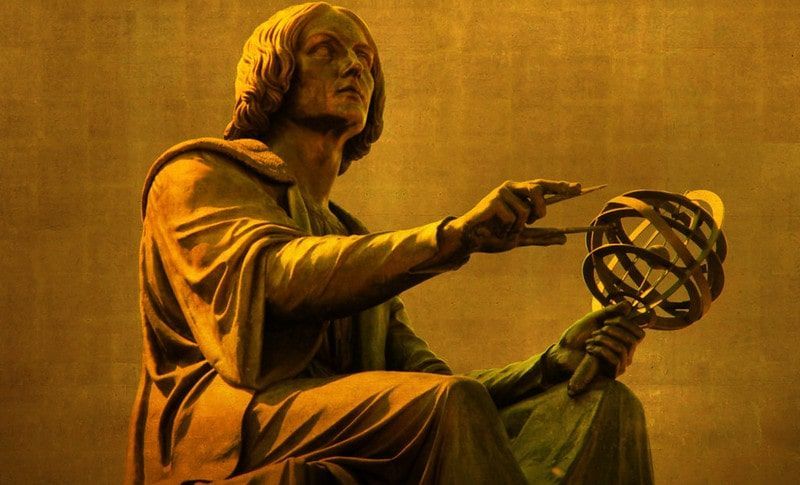
Uncover the obscure context in which the musketeers of the cosmos - Copernicus, Kepler, Giordano Bruno, and Galileo, among others - investigated and publicized their scientific discoveries.
Nicolaus Copernicus describes the planetary system
February 19, 1473, was a memorable day for the small Polish town of Torun (Thorn). Nicolaus Copernicus was born. From that year until 1543, when the genius died and his book De Revolutionibus Orbium appeared to the world, a great silence -broken in fleeting moments- surrounded the life of the taciturn describer of the planetary system in its essential aspects.
From the mists of Poland emerges the most potent drill for the dogmatism of the Roman Church, which stands strangely obtuse before the difficultly interviewed truth. Thus, the great silence that surrounds the great truth makes Nicholas an almost ghostly being that gets lost in the Nordic mists. But, we must go by parts.
From the accumulation of fantastic explanations that emerged from the brains, the Greek theory of Ptolemy, exposed in his Almagest, remained above the prudent ones of Epicurus and Democritus; the Earth was the center of the Universe. The scriptures said so and the Church supported it, even if it was with green firewood. Here is the great silence of a man; explainable by the terrible scenario of the time: the fear of intolerant attitudes. It seems as if the life of this human being served as a candid screen for the subsequent outburst of cosmogonic truth.
But, let's go back. Let's see Copernicus in his strange medieval attire; the Renaissance emerges before his astonished adolescent eyes. Virgil's prodigal land indicates to the young man from the misty lands of the North that the Mediterranean is a hotbed of passions and ideas. He learns much and everything. He studied in Padua and Bologna. In Rome, where he has always had a good grip, he is given a chair of mathematics at the university, where he has a disciple who will later become Pope: Alexander Farnese.
There he is consulted for the reform of the calendar in 1514, and his remarkable ability is highlighted by giving the year a length of 365 days, 5 hours, 53 minutes, and 57 seconds. That is, according to modern calculations, he was wrong by only 22 seconds. Thus, Pope Gregory will take him into account for the reform of the calendar.
The bears and foxes of their beautiful but sad native forests are transformed, by the art of mundane alchemy, into grave knights who dress in purple finery, adorn their heads with the capes of princes of the Church, and have, some of them, a singular weakness for the mandolin, the Florentine foil or dagger, the deadly potion or the graceful break of the Roman girls. Nevertheless, it will be necessary to provide the reader with some information.
Young Nicolas listens to love serenades, reads Plautus, and discovers the humanists. He also discovers the limpid sky of Italy and the stars that twinkle in it. In these, his first serious incursions into the celestial vault (he takes the fundamentals from Brudsewsky in Krakow), he is guided by the famous astronomer and astrologer Maria of Novara. And all of them were influenced by Nicholas of Cusa (1401-1464), the first to oppose the structure of the medieval universe.
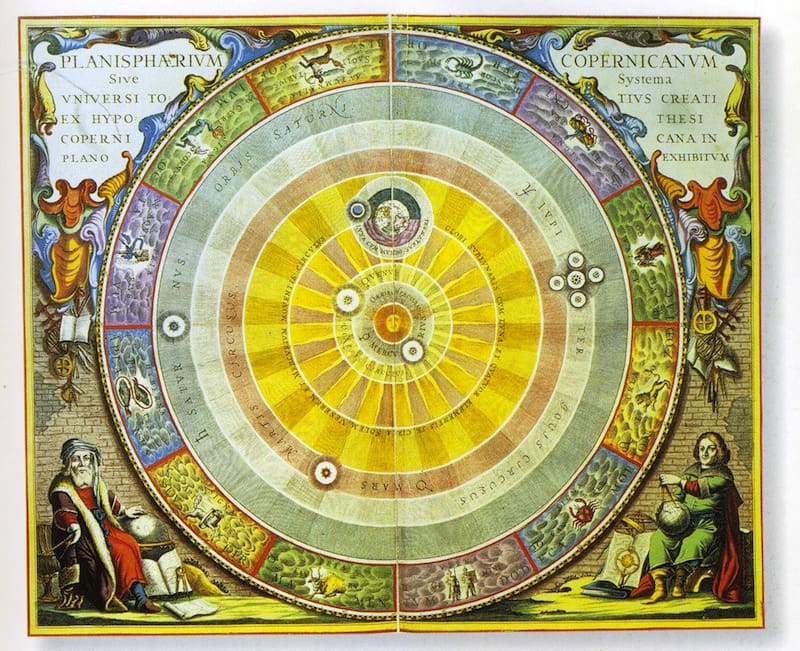
Cusa became a cardinal and disturbed the intellectual world of the time with his book Docta Ignorancia published in 1514 where he "intuited" what Copernicus, twenty years later, would bring to public light with his revolutions. Nicholas devoured everything while doing his calculations. He had a brother, Andreas, who gave much to talk about in the worldly chronicle of Italy and Germany.
The two were under the constant care of their uncle, an enlightened despot, Lucas Watzelrode, who attained the prebend of bishop and governor of Ermland. It was the protective uncle Luke who served as father of the reserved Nicholas and the dissipated Andreas (who is said to have contracted "an accursed disease" - a kind of leprosy?). After studying at the University of Krakow, Nicholas obtained, through his uncle, the position of the canon of the cathedral of Frauenburg and left for Italy.
The dawn of history was announced and Columbus had discovered new lands that would shake the world as it entered the Renaissance.
The Latin world, fantastic at times and always suggestive, was shaken by the historical impacts. Once again, Rome became pagan under the effect of the orgies of Rodrigo Borgia who assumed the papacy under the name of Alexander VI. In the streets of the capital of the so-called Christian world, dark plots, political assassinations under the complicit gentleness of the Tiber. Ah, but Italy had marvelous compensations! Who, among mortals, would dare not admit Michelangelo? Who would not pay homage to Leonardo da Vinci? They are men carved for eternity.
The fifteen years of Italian maremagnum made Copernicus a thinker and also an eminent scientist who mastered various and remarkable disciplines: mathematics, medicine, and jurisprudence. This body of wisdom will generate in Nicholas, together with his Renaissance knowledge and an advanced opinion of the world of the time, the firm and very prudent determination not to interfere in matters that could, because of their risky speculative nature, interfere in the quiet life of the Episcopal Palace of Heilsberg where, under the protection of his uncle Bishop Watzelrode, he served as secretary and science advisor.
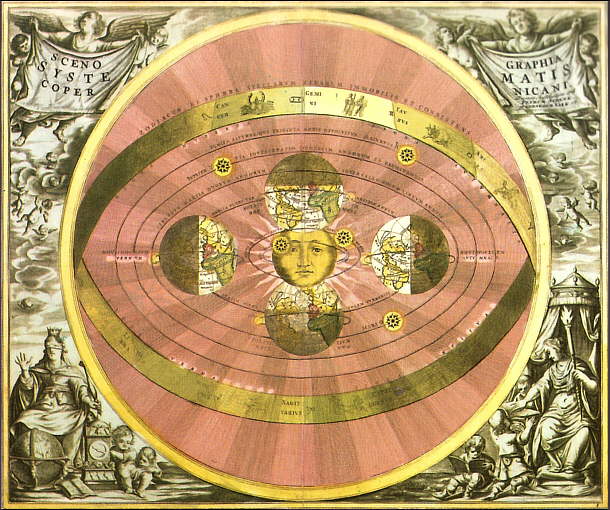
There are indications to affirm that, in some particular meeting that took place in that same palace, Copernicus exposed the first fruits of his studies of the heliocentric system. In it, the Universe occupies a finite space whose limit would be the distant stars. The center of this world would be the Sun. Around the King Star move Mercury, Venus, the Earth, Mars, Jupiter, and Saturn. (Much later Uranus, Neptune, and very recently Pluto would appear). The Moon moves around the Earth.
The different view of the Cosmos is due to the annual revolution of the Earth in its orbit and of course to the rotation of our planet on its axis. The theory was measured in epicycles which is the circle described by a planet around a center (in this case the Sun). The book that gave rise to the revolution, is not easy, even the experts warn a lot of tangles. But its approach made the movements of the planets "understandable". Of course, after Copernicus would come to Tycho Brahe and Johannes Kepler, to whom we will refer later, until Galileo Galilei.
Outside certain informed circles, darkness reigned. So who would be interested in what was discussed in the prudent Heilsberg reserve? Outside the walls of the old bishop's palace, a legendary astronomer of the HI century, Ptolemy, ruled as king and master. The Earth, therefore, was the political center of the Universe; Rome was the political center of the Earth. But stormy winds were blowing.
A former friar of devilish personality had just arisen in Wittenberg: Martin Luther, who achieved the greatest division of religious power in Europe. The island kingdoms of England and Scotland and those of the continent: Sweden, Norway, Denmark, North Germany, and the land of John Huss (Bohemia) separated from the pontifical power. Would something similar happen about the scientific world sustained, until now, by the Church? In the meantime, the canon remains silent. Why this silence?
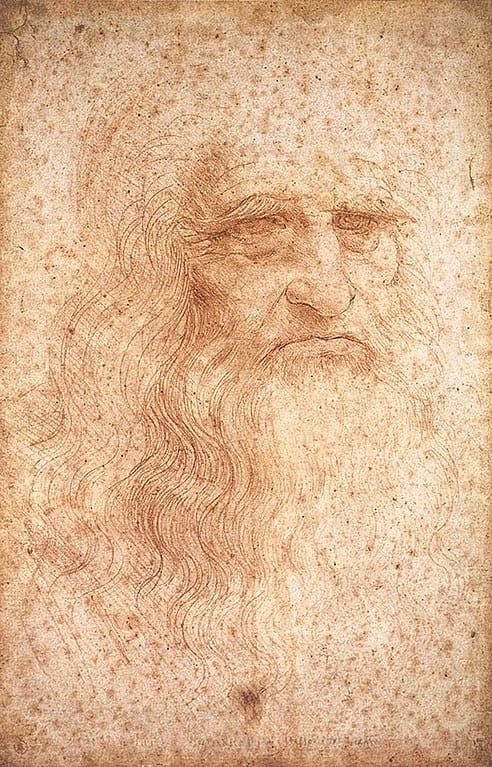
At the age of 40, Copernicus is a priest in Ermland, a small town on the shores of the Baltic, and in this gray setting, he dedicates himself to studying, verifying, to mature, in short, his great challenge to the astronomical world. He thinks of the vague feelings now converted into certainty, premonitions that assailed the young Nicholas in Krakow and Florence. Nicholas remembers the stars and Mary of Novara.
It is in those years when a professor of Wittenberg (Luther's headquarters) named Rhaetius, a scholar and admirer of Copernicus' ideas, joins a group of friends, among them Tiedeman Giese, to whom Nicholas makes known the first fruits of his book. For many years the book would remain almost hidden because the fear of religious persecution would accompany him all his life (it should be remembered that De Revolutionibus Orbium, many years after Nicolas' death, would be considered heretical and condemned by the Index).
We imagine these meetings in the misty Ermland when Nicholas explains to them, trembling, that the Earth revolved on itself and depended on the Sun, the center and motor nerve of the whole planetary system. There is a general excitement and it is those friends who force the brilliant Pole to come out of his quiet anonymity guarding his book that he defined very elitist "sun for mathematicians".
The arrival and enthusiasm of Rhaetius gave Copernicus' work a radical boost; indeed, from 1540 to 1541 Georg Joachim Rhaetius copied with his hand, corrected minor data, and in short prepared Nicholas' manuscript to take it to the printing press. But there was a catch: fear.
Amid chicanery more typical of a lawyer than of a true man of science, Copernicus asked the enthusiastic Rhaetius to stop editing the book but authorized him to publish a summary in which Copernicus' name would not be mentioned and which would bear the title Narratio prima. It was all cloaked as a misty intellectual skirmish of an astronomical kind; in short, a small book of 76 pages with a strange heading that reads:
To the most illustrious doctor Johannes Schoener, this first relation of the book De las Revoluciones, composed by the very learned and excellent mathematician reverend father doctor Nicolas de Thorn, canon of Ermland, from a young mathematical scholar.
What is it about? There are seven axioms:
1. Celestial bodies do not all move around the same center.
2. The Earth is not the center of the universe.
3. The Sun is the center of the planetary system and, therefore, of the universe.
4. Compared to the distance of the fixed stars, the distance between the Earth and the Sun is infinitely small.
5. The apparent daily revolution of the firmament is due to the rotation of the Earth on its axis.
6. The apparent annual motion of the Sun is because the Earth, like the other planets, revolves around the Sun.
7. The apparent "stops and reversals" of the planets are due to the same cause.
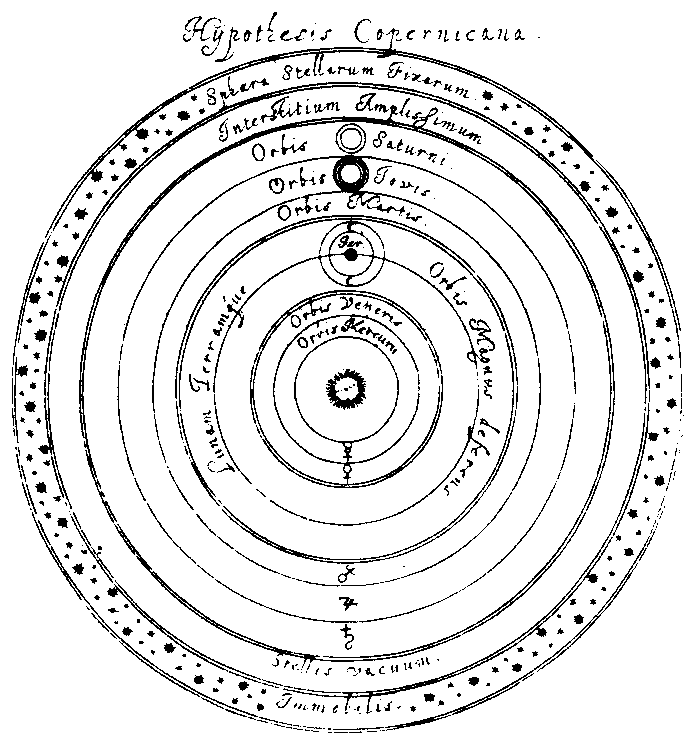
The theories of Copernicus barely appeared on the historical horizon of the Europe of those years, divided by the religious division between Catholics and Protestants. But the Copernican revolution was beginning to ferment. People of the high clergy, mathematicians, and the few friends he had, encouraged him to leave the anonymity -partial or total- maintained for years, to publish On the Revolutions of the Celestial Spheres. It is famous that Copernicus, almost in agony, held in his arms one of the first copies of his famous book, before dying on May 24, 1543, of a cerebral hemorrhage. His revolutionary thesis remained in his dead hands.
At first, the high ecclesiastical authorities kept silent. The news, in those times, spread slowly, and at the cultured levels; the people, had a confused notion concerning the astronomical mysteries. Many years passed. More than half a century later, the waters will be agitated in the rest of Europe. Thus, in 1600, the Church was shaken by the doctrines of Giordano Bruno.
This Italian monk immortalized his name when he was convicted of heresy and publicly burned in Rome. After him, Galileo will prove, in a scientific way, the theories of Copernicus (and for this, he was vexed and died in a cottage, designated as confinement, near Florence). Johannes Kepler said that the planets moved elliptically - not in a circle - and naturally, he found himself declared an apostate. Finally, Newton with his theory of gravity and his studies of the Earth, Moon, and Sun put an end to any scientific uncertainty.
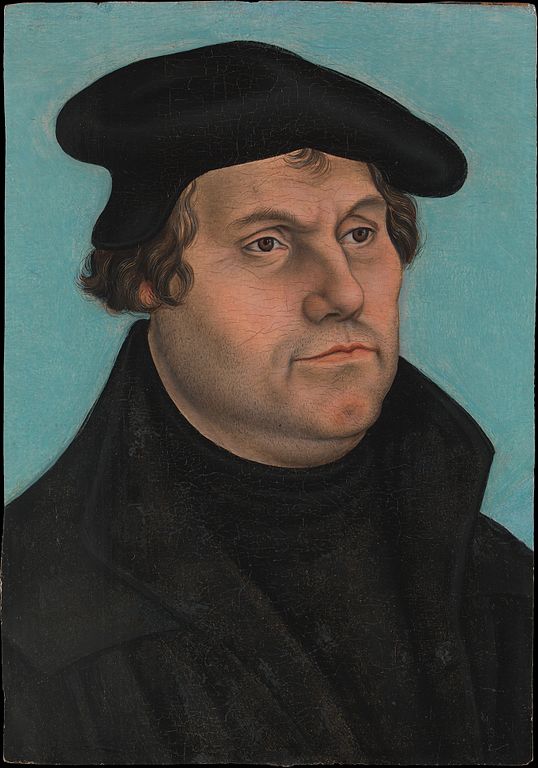
In 1616, 73 years after Nicholas' death, the Catholic Church placed Copernicus' book on its list of forbidden books. For his part, Martin Luther stigmatized him as an "upstart astrologer" saying of him, among other things, "this fool wants to upset the whole of astronomical science:
this fool wants to overturn the whole astronomical science. But the Holy Scripture tells us that Joshua ordered us to stand on the Sun and not on the Earth...
These barbarities were going to have their answer when 28 years after the death of the canon of Ermland was born in Germany -the year 1571- a tormented and brilliant Johannes Kepler who set out to clarify the mysteries of the Solar System. Alongside him, with the accurate calculations of a Dane of Rabelaisian aspect, Tycho Brahe, the circles became ellipses. New shocks came to the scientific minds overwhelmed by the calculations of the Great Geometer. Carl Sagan said of him:
Astronomy is part of physics, said the German sage Kepler, who stands on the cusp of history; the last scientific astrologer was the first astrophysicist.
Thus, the great Copernican silence became a revolutionary roar that put the planetary spheres in their rightful place in the cosmos.
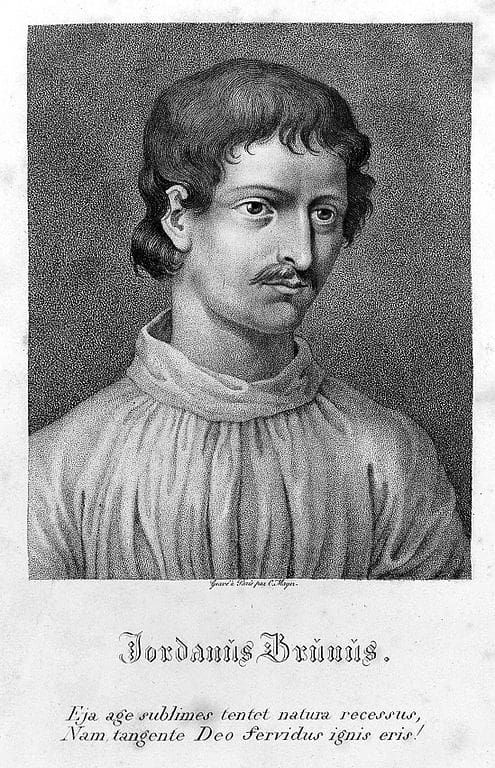
Johannes Kepler investigates, studies, and discovers
Kepler was fiercely inquisitive about what the Middle Ages had hidden or condemned. He is a character who investigates, studies, and discovers. Torn in situations of a personal nature (his elderly mother was tried and acquitted for sorcery, and he defended her). Great solitude and great hardship. He had high positions: mathematician successor of Tycho at the Court of Rudolph Il, he was the author of great scientific works, of astrology (to which he set prudent reservations), of science-fiction, and was a philosopher of pantheistic glimpses.
More than a Renaissance mind, he is a modern brain. Although he earned his living with calendars and was an astrologer at the Court of Waldstein, he considered this "stepdaughter of astronomy" and a "dirty puddle". As he was well advised, that stepdaughter provided him with some florins for the meager salaries his lords provided him. He sailed between Protestants and Catholics and deep down we believe he was a bit of a reject of both.
He graduated from the Faculty of Arts in Túbingen and began a long journey through the classrooms. In Túbingen they knew that this new professor would be, without a doubt, a bad priest, but he could be a good teacher of mathematics and they were right. Kepler himself, in his notes, says that he often, on the faculty, defended the views of Copernicus.
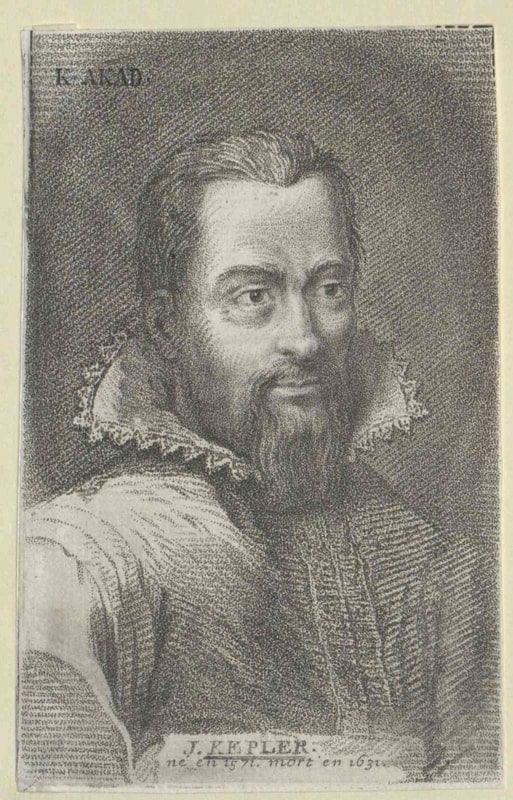
He believed - he intuited it in Gratz - in a geometric universe. His thesis was set out at length in his book Mysterium Cosmographicum (written at the age of 25). The advance, about Copernicus, is that the planets around the Sun do not move in circles, but in oval orbits and their mobility is the effect, presumably, of a force that, emanating from the Sun, pushes the planets (at that time five were discovered) around their orbits. In his admirable book The Sleepwalkers, Arthur Koestler summarizes the situation by saying:
It would be difficult to estimate too much the revolutionary significance of the proposition (the presumed force emanating from the Sun). Indeed, for the first time since antiquity, it has been attempted not only to describe the motions of the sky from the geometrical point of view but also to assign them a physical cause. We have arrived here at the point where astronomy and physics are reunited again, after a divorce that lasted two thousand years. That reunion of the two halves of the divided spirit produced explosive results. It led Kepler to the formulation of his three laws; it led to the establishment of the pillars on which Newton built the modern universe...
And Kepler himself had shaken off the superstitions of medieval times. On his errors, among which was not contemplating gravity, barely intuited, he built modern astronomy. It must be said, both Tycho and later Galileo was reluctant to a loyal collaborate with Kepler. They were proud and somewhat envious of this dreamy and spontaneous German. But Tycho finally gave him an account of his admirable measurements.
When Brahe died, Kepler was promoted to an imperial mathematician with Rudolph Ill and, in 1609, published his most important work, entitled New Astronomy, based on the causality or physics of the sky, derived from investigations on the motions of the star Mars, which were based on the observations of the noble Tycho Brahe.
This book contains two of Kepler's first three planetary laws, namely: 1) that the planets move around the Sun not in circles, but in elliptical orbits so that one focus of the ellipse is occupied by the Sun; 2) that a planet moves in its orbit not with uniform velocity, but in such a way that a line is drawn from the planet to the Sun always sweeps equal areas in equal times. The third law, published later, does not concern this question. From these three laws, Newton formulated his law of universal gravitation. Kepler, by his speculations, leads Newton to certainty.
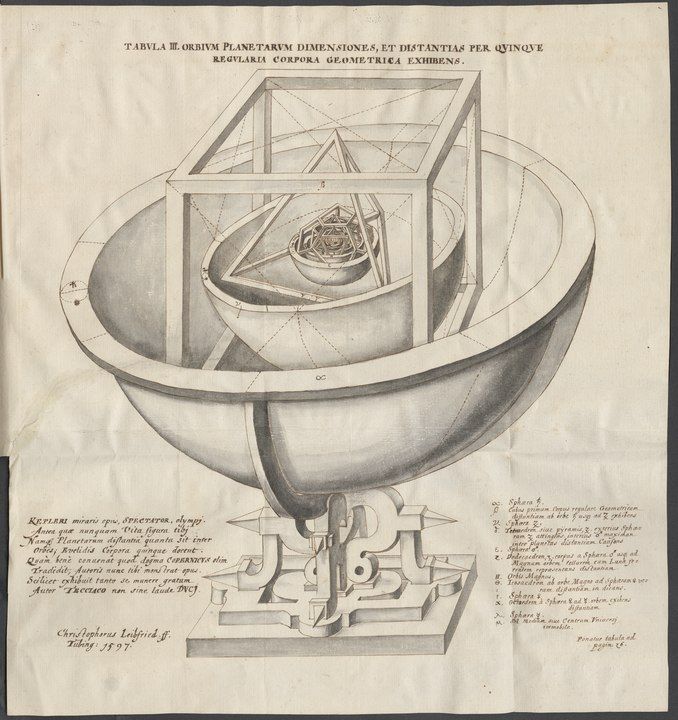
In 1610 news reached him of a mathematician from Padua and his discoveries (four new planets) using an extraordinary apparatus called a telescope. Shortly thereafter he received a copy of Galileo's book The Starry Messenger. New horizons for the imperial mathematician. He did not cease in his struggle to clarify cosmic geometry. Eight years later, in 1618, he wrote Harmony of the World (continuation of the Cosmic Mystery) which is a synthesis of that universe in geometry, music, astrology, astronomy, and epistemology. In that ambitious book he enumerates the third law, which in the convoluted astronomical jargon reads:
the squares of the times of the revolutions of two given planets are the cubes of their mean distances from the sun
The objective importance of the Third Law lies in the fact that it provided Newton with the basis for the discovery of the law of gravity. Years before, thanks to Copernicus, Kepler discovered (1st Law) that the circles intuited by the clergyman of Thorn were in truth elliptical orbits.
These musketeers of the cosmos, stumbling brilliantly, found the exact formula. Like the human being and his civilization, Kepler wrote many more works, among which stands out, in 1610, Dioptrice, which is an advance of the optics of our days (it already speaks of the current diopters).
In Regensburg, in November 1630, Kepler died; his spirit had been clouded days before. His bones were scattered by the vagaries of the Thirty Years' War. The epitaph that Kepler wrote for himself is preserved:
I measured the heavens, now the shadows of the earth I measure.
Heavenly was the spirit, now the body lies in the shadows.
Note
This short essay has been strengthened by the beautiful and erudite books of Carl Sagan, Cosmos, Arthur Koestler, The Sleepwalkers, and Stephen VW. Hawking, History of Time, as well as articles on scientific topics.
By Adolfo Hernández Muñoz, Source: Correro del Maestro No.24




